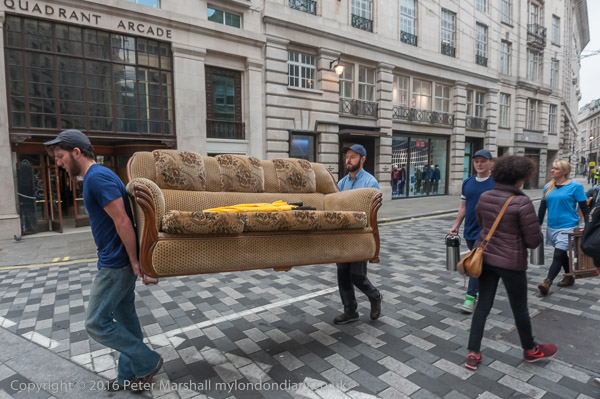
One of the first protests I took part in – as a protester rather than a photographer – was outside a Barclays Bank in Manchester in the 1960s, part of a campaign against their financing of the South African apartheid regime. Although the ‘Global Nonviolent Action Database‘ at Swarthmore University states “Student activists launched the Boycott Barclays campaign in 1969” and credits “students at London universities”, I’m fairly sure we did it before then in Manchester.
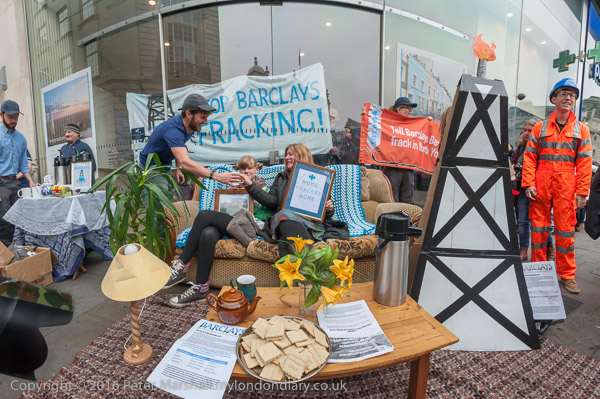
But of course Manchester did so many things first, and I sat for physics lectures at a bench with a small plaque recording “Rutherford first split the atom here” and later a short distance away shortly after 11 o’clock in the morning on June 21st, 1948 the computer age began, when the first stored program ran on the world’s first stored-program electronic digital computer, the Small-Scale Experimental Machine, better known as “The Baby“. As its father Freddie Evans later said “It was a moment to remember. This was in June 1948, and nothing was ever the same again.”
People often tell me that protest never works, but the Barclays campaign proved them wrong, though it did take until 1986 before Barclays completely ended its support for the apartheid regime. But Barclays have of course since been involved in many other ethically questionable activities including laundering money for Russian criminals, and, the focus of the protest I was photographing in October last year by Frack Off London and Divest London in collaboration with Frack Free Ryedale, financing fracking in various communities across the UK.
The London protest was one of many at Barclays around the country, but this one was meeting in Golden Square and heading for an unnamed branch – which turned out to be at Piccadilly Circus. As we approached we met up with people carrying a sofa and other furniture which they hoped to set up inside the branch for to ‘Bring it Home to Barclays’ the effect the fracking they finance would have on communities – such as Ryedale.
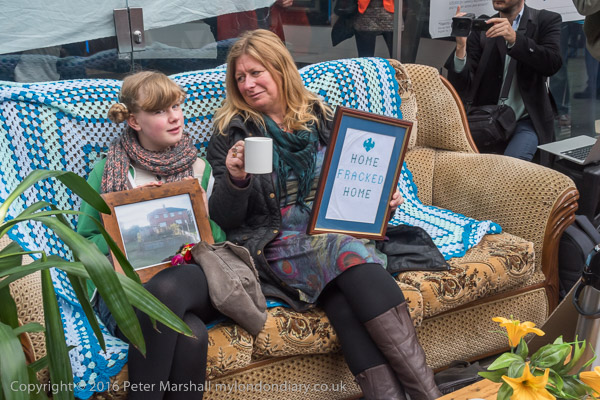
The first protesters to arrive managed to rush into the branch but security there quickly closed the door before the furniture arrived, and rather than rush inside with the protesters as I’ve often done, I’d chosen to stay with the sofa – and it turned out to have been the right choice.

The protesters quickly set up their living room set up a ‘living room’ on the pavement outside while those inside held their banners up against the windows. A mother and daughter from Rydale where fracking has been approved around their home made themselves at home on the sofa with a picture of their house and a framed sampler embroidered with the Barclays eagle and the message ‘Home Fracked Home’. There wasn’t a lot of space to work, with other photographers and protesters crowding around, but with the fisheye and a lot of patience waiting for people to get out of the way I managed to get the whole scene – including two engineers with a fracking rig – into a picture.
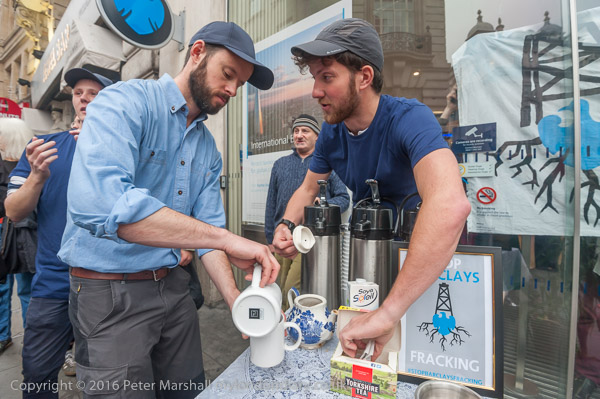
And there was tea with hot water from the urn and specially made biscuits which tasted fine.
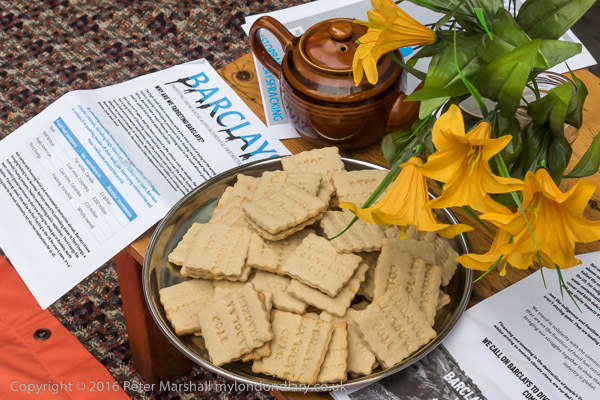
More at Bring Fracking Home to Barclays.
______________________________________________________
There are no adverts on this site and it receives no sponsorship, and I like to keep it that way. But it does take a considerable amount of my time and thought, and if you enjoy reading it, a small donation – perhaps the cost of a beer – would be appreciated.
My London Diary : Buildings of London : River Lea/Lee Valley : London’s Industrial Heritage
All photographs on this and my other sites, unless otherwise stated, are taken by and copyright of Peter Marshall, and are available for reproduction or can be bought as prints.
To order prints or reproduce images
________________________________________________________